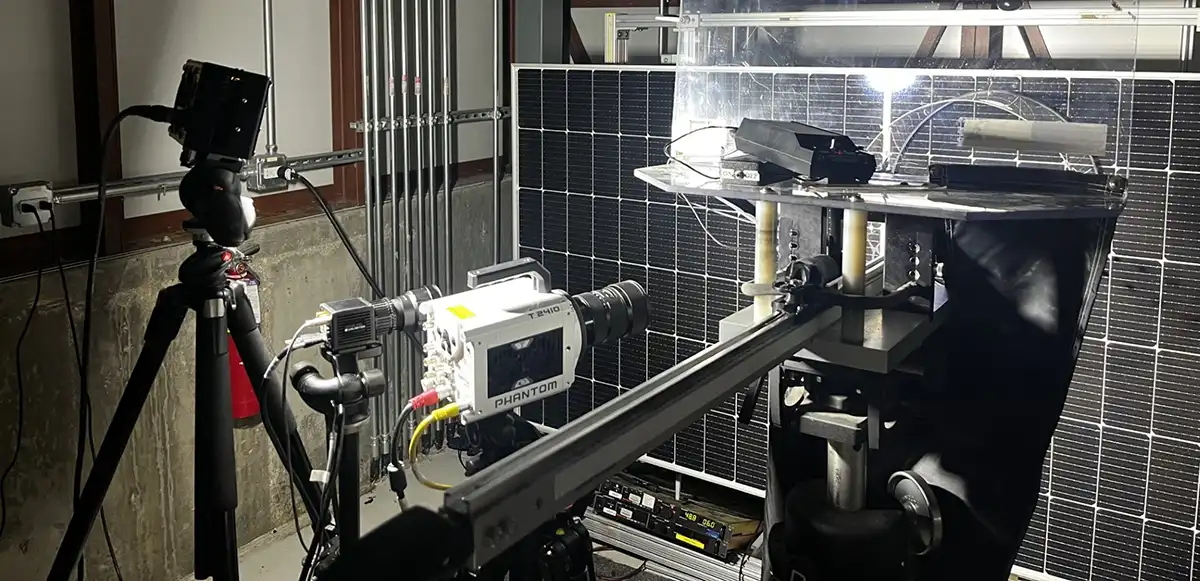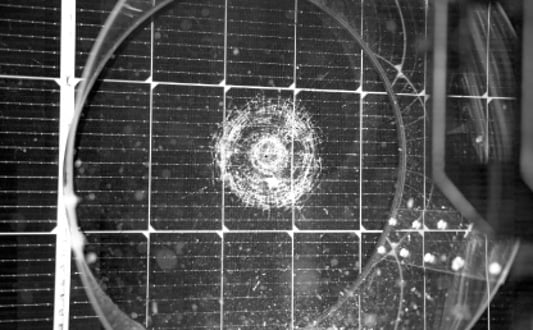Effect of Cell Cracks on Module Power Loss and Degradation: Modern Module Architectures
DuraMAT seeks to understand the direct correlation between lab-based accelerated stress testing of cell cracks on photovoltaic (PV) modules.
Cell cracks will be tested using the National Renewable Energy Laboratory’s (NREL’s) dynamic mechanical acceleration (DMX) device and real-world aging of cell cracks/modules deployed at the Electric Power Research Institute’s (EPRI’s) outdoor test facility.
Three sets of modules, two with a glass/glass configuration and one with a glass/backsheet configuration, were procured for the study. Initial results from drop testing, cold exposure, and hail testing on glass/glass modules show that it is nearly impossible to induce cell cracks without breaking the back glass.
Future work will focus on investigating:
- Mechanisms/forces linked with inducing cell cracks in glass/glass modules
- Whether preexisting cell cracks introduced during cell/module manufacturing in glass/glass modules expand and propagate over time.
For a detailed analysis, we will collect baseline current-voltage (IV)/electroluminescence (EL) data on these modules followed by accelerated stress testing and final IV/EL data.
Core Objective
Team Members
Viral Parikh and Robert Flottemesch at EPRI; Martin Springer, Tim Silverman, and Michael Deceglie, NREL; Michael Gostein, Atonometrics; Will Hobbs, Southern Company; and Jim Rand, Core Energy Works
Impact
The probability of introducing cell cracks in glass/glass modules without breaking the glass is nearly zero. Given that most of the PV industry is moving toward bifacial configurations, this finding is highly relevant to the field.
Learn More
These resources are available to NREL scientists and external collaborators.
2024. “Effect of Cell Cracks on Module Power Loss and Degradation: Modern Module Architectures.” DuraMAT Fall Workshop, September 17–18, 2024.
Karin, Todd, Tristan Erion-Lorico, and David Delong. 2023. “What Happens When Installers Walk on PV Modules?” PV Evolution Labs YouTube Video.
Parikh, Viral, Robert Flottemesch, Wayne Li, Martin Springer, Michael Gostein, Will Hobbs, and Jim Rand. 2024. “Effect of Cell Cracks on Module Power Loss and Degradation: Modern Module Architectures.” Poster presented at the 2024 PV Reliability Workshop, Poster Session A, February 2024. Page 11.
Contact
To learn more about this project, contact Viral Parikh, EPRI.

Hail test setup. Photos by Martin Springer and Jimmy Newkirk, NREL

Hail test results on glass/glass module resulting from a 55-mm hail hitting a solar panel at 75 m/s. Photo by Martin Springer and Jimmy Newkirk, NREL